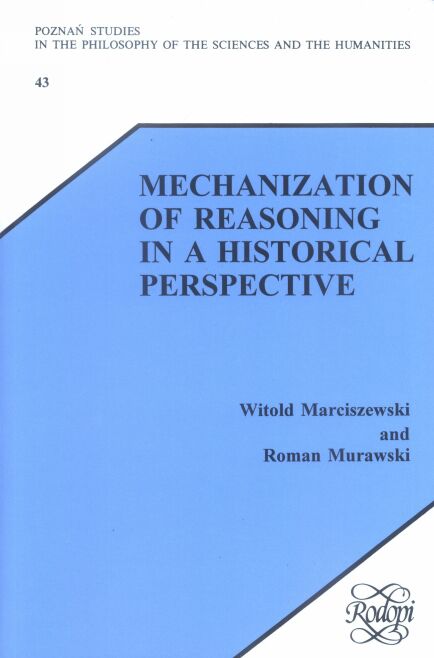
|
Roman Murawski
(współautor W.Marciszewski)
|
| Mechanization of Reasoning in a Historical Perpective
|
| Editions Rodopi, Amsterdam/Atlanta, GA, 1995
|
| 267 stron
|
Table of Contents
Acknowledgements
1. From Mechanization of Reasoning to a Study of Human Intelligence
1.1 Von Neumann's project related to cognitive science
1.2 The Leibniz-style Cybernetic Universe
1.3 Information-processing through data-processing
1.4 Intelligence and model-based reasoning
2. The Formalization of Arguments in the Middle Ages
2.1 The contetion of the present chapter
2.2 Heuristic algorithms in the Middle Ages
2.3 The role of Lull and Lullism
3. Leibniz's Idea of Mechanical Reasoning at the Historical Background
3.1 An interaction between logic and amthematics
3.2 The Renaissance reformism and intuitionism in logic
3.3 Leibniz on the mechanization of arguments
4. Between Leibniz and Boole: Towards the Algebraization of Logic
4.1 Preliminary reamrks
4.2 Leibniz's direct successors
4.3 The work of J. H. Lambert
5. The English Algebra of Logic in the 19th Century
5.1 A. De Morgan's syllogistic and the theory of relations
5.2 G. Boole and his algebra of logic
5.3 The logical works of Jevons
5.4 J. Venn and logical diagrams
5.5 Conclusions
6. The 20th Century Way to Formalization and Mechanization
6.1 Introduction
6.2 G. Peano - symbolic language and the axiomatization
of mathematics
6.3 G. frege and the idea of a formal system
6.4 B. Russell and the fulfillment of Peano's and Frege's project
6.5 Skolemization
6.6 D. Hilbert and his program
6.7 J. Herbrand
6.8 G. Gentzen and natural deduction
6.9 Semantic and analytic tableaux
6.10 Conclusions
7. Mechanized Deduction Systems
7.1 Introduction
7.2 First mechanized deduction systems
7.3 Unifucation and resolution
7.4 Further development of mechanized deduction systems after 1965
7.5 Final remarks
References
Index of Subjects
Index of Names
Extended table of Contents
|
|
|